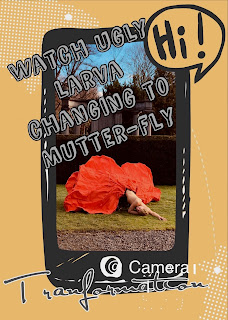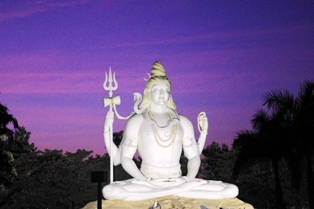Transformation: Trends in Media and Entertainment
Ardent gamers and comic strip buff would surely know Metamorphosis as a theme.
The process excites viewers and at times leaves them in awe. It’s that amazing moment when the protagonist or antagonist of the story goes through transformation so distinct it leaves one speechless. Over the years there have been many extreme transformations in many industries like healthcare, retail, media and entertainment.
Whether you are a big movie fan, video game junkie or a TV binge watcher, new technologies have completely changed the way we engage, connect and communicate.
Often in stories, character transformations are not limited to magical genre. In fact, there are many great titles which show anime characters that transform into unusual, more sinister or just bonkerballs nuts.
Naruto Shippunden’s Naruto Uzumaki: Naruto Uzumaki is a skilled fighter and ninja.He master’s the art of "jinchuriki," which gives him the ability to connect with his tailed beast’s chakra.
Detective Conman: Detective Conan has everything to keep you interested till the very end: funny moments, love story, drama, and unique stories.
The anime hero were normal people with multi-tasking ability along being street-smart they had the power to apply wisdom. Now the same ability is handed to common people through technology.
It’s no wonder the entertainment industry has been turned on its head recently due to technology.
From the types of content being created, to where the content is being consumed, and who is now creating it.
The following are a few of the biggest transformations making waves in entertainment and media.
The New Norm: Multi-channel Experience
While Watching your favourite sport, you also check Facebook for what’s trending and tweet about the live-game, the players performance and the win or the loss.
Content delivery is no longer linear. Marketing is not a one time thing. It’s an all channel event.
Artificial Intelligence is changing the entire creative process
In a new wave of computer-human “collaboration,” companies are already using AI to create effective movie plot points based on box office performance. In Hollywood, a company recently used AI to create a horror movie trailer based on trailers the AI had already processed and annexed. The result?
The AI created the final trailer within 24 hours—far less than the usual 30 days it would take for a manual edit. And it used clips and scenes proven to be effective by market research, increasing the likelihood that it would actually get viewers to watch. But it’s not just movies. McCann Erickson in Japan has an AI creative director that analyzes client briefs before pitching. From Language processing and image recognition to speech recognition and deep learning, there is truly no end to the way AI is impacting the creative process in media and entertainment.
The New Fad of Curated Content
Netflix and Amazon have been using curated content effectively for years, suggesting what shows we’d like to watch, and what products we’d like to buy based on our past performance.
Tailor made packaging is the New Business Model
During the cable-satellite era, we suffered through having to purchase 300 channels just to get the two or three that we actually like. No more. The rise of Hulu and Netflix has left many to cut the cord with traditional cable companies. Instead, users are going online to find just the content they want, be it YouTube videos, or original series on Netflix, Hulu, and even Amazon—and cable companies are replacing traditional offerings with smaller bundles and specialty packages.
Coming Soon is Virtual and Mixed Reality
Blending of virtual and mixed reality is starting to make its way into media and entertainment.
Last summer, we saw the European Soccer Championships featured in 360 VR immersing fans into the middle of live games giving them a taste of the power of virtual reality. Of course we also saw the Pokemon Go craze come and go over the past 18 months and while this was just a tiny introduction to the capabilities of mixed reality. The trend is still in its infancy compared to where it will go.
Data makes Advertising Smarter
Machine learning combined with analytics makes opportunities available with augmented reality and AI; Smart-age gives smart advertising. Forget traditional product placements. Soon it will be possible to order your favorite actor’s jacket just by clicking the screen when it appears. Even more, using big data, marketing agencies will even be able to switch out specific product placements to use ones you’re most likely to buy.
Unlike healthcare, the digital transformation happening in the media and entertainment business focuses mostly on—marketing and money. Deep pockets with innovative rules still rule, leaving the consumer speechless.
Media trends of 2019 sourced from Forbes



Comments
Post a Comment